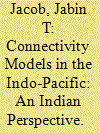| Srl | Item |
| 1 |
ID:
191212


|
|
|
|
|
| Summary/Abstract |
Decarbonizing Europe by 2050 requires significant capital investments in renewable energy (RE). The weighted average costs of capital (WACC) greatly impact RE production costs and influence the government support payments needed for the financial viability of RE projects. Reducing the risks for RE investors can decrease WACC and ensure that the EU meets its climate targets at the least cost. We investigate the potential for lowering support payments to RE projects by de-risking financing conditions through measures including revenue stabilization and low-risk auction designs for solar PV and onshore wind across 21 countries in Europe. We find that de-risking debt is almost twice as effective as de-risking equity. On average, support payments can be reduced by 3.3 EUR/MWh and 1.9 EUR/MWh, respectively, and in some cases, fall to zero. The effects differ across countries, higher-risk countries like Greece would experience more significant benefits from de-risking than lower-risk countries like Denmark and Germany, where support costs depend more on investment variables such as capacity factors. Overall, we show that WACC depends largely on country risk. Nonetheless, de-risking policies like revenue stabilization can improve the investment climate for RE, reduce the need for government support, and contribute to achieving decarbonization targets.
|
|
|
|
|
|
|
|
|
|
|
|
|
|
|
|
| 2 |
ID:
162733


|
|
|
|
|
| Summary/Abstract |
China’s Belt and Road Initiative (BRI) is often sold as a project that aims to meet the infrastructure deficit in many underdeveloped parts of the world. However, Chinese projects under the BRI come with features that have negative short-term and long-term implications for the host countries in question. Chinese project financing almost uniformly lacks transparency, including about the terms of this financing, and is accompanied by uncertainty about local benefits such as employment and by poor standards. This paper begins by highlighting some key features of Chinese infrastructure projects under the BRI, before it examines, in detail, the financing of these projects, particularly in South Asia. The article concludes by stating that China’s success in pushing the BRI – despite its several problems – is the result of the inability of democratic nations to come up with feasible alternatives that respect local sensitivities and conditions in the countries in need of infrastructure development. India, especially, has much to reflect upon in respect of its own methods and approaches towards its neighbours and towards overseas development assistance in the wake of China’s BRI.
|
|
|
|
|
|
|
|
|
|
|
|
|
|
|
|
| 3 |
ID:
150709


|
|
|
|
|
| Summary/Abstract |
Solar resource estimation risk is one of the main solar PV project risks that influences lender’s decision in providing financing and in determining the cost of capital. More recently, a number of measures have emerged to mitigate this risk. The study focuses on solar industry’s best practice energy resource estimation and assesses its financing implications to the 27 MWp solar PV project study in Brunei Darussalam. The best practice in resource estimation uses multiple data sources through the measure-correlate-predict (MCP) technique as compared with the standard practice that rely solely on modelled data source. The best practice case generates resource data with lower uncertainty and yields superior high-confidence energy production estimate than the standard practice case. Using project financial parameters in Brunei Darussalam for project financing and adopting the international debt-service coverage ratio (DSCR) benchmark rates, the best practice case yields DSCRs that surpass the target rates while those of standard practice case stay below the reference rates. The best practice case could also accommodate higher debt share and have lower levelized cost of electricity (LCOE) while the standard practice case would require a lower debt share but having a higher LCOE.
|
|
|
|
|
|
|
|
|
|
|
|
|
|
|
|
| 4 |
ID:
166551


|
|
|
|
|
| Summary/Abstract |
This paper investigates the legal barriers to apply project finance for building nuclear power plants. Countries such as the UK, Turkey and emerging economies (i.e. Malaysia and Indonesia) are increasingly seeking to attract private investors for nuclear projects using project finance. This is an innovative approach, and until now the only cases registered are Hinckley Point C in the UK and Akkuyu in Turkey. This paper scrutinises the mismatches between the requirements of project finance and nuclear law. Nuclear law introduces specific requirements affecting the security interest of private lenders, hindering the bankability of nuclear projects on a non-recourse basis. The paper emphasises that the performance-based regulatory approach is more compatible with project finance compared to the prescriptive based one. Furthermore, the paper examines the gaps between nuclear and holistic energy law, looking at the financing of energy infrastructures. Improving nuclear law enables to apply project finance to nuclear power plants, facilitating their deployment. Consequently, nuclear law plays a central role in promoting sustainable energy mixes characterised by reduced carbon emissions.
|
|
|
|
|
|
|
|
|
|
|
|
|
|
|
|